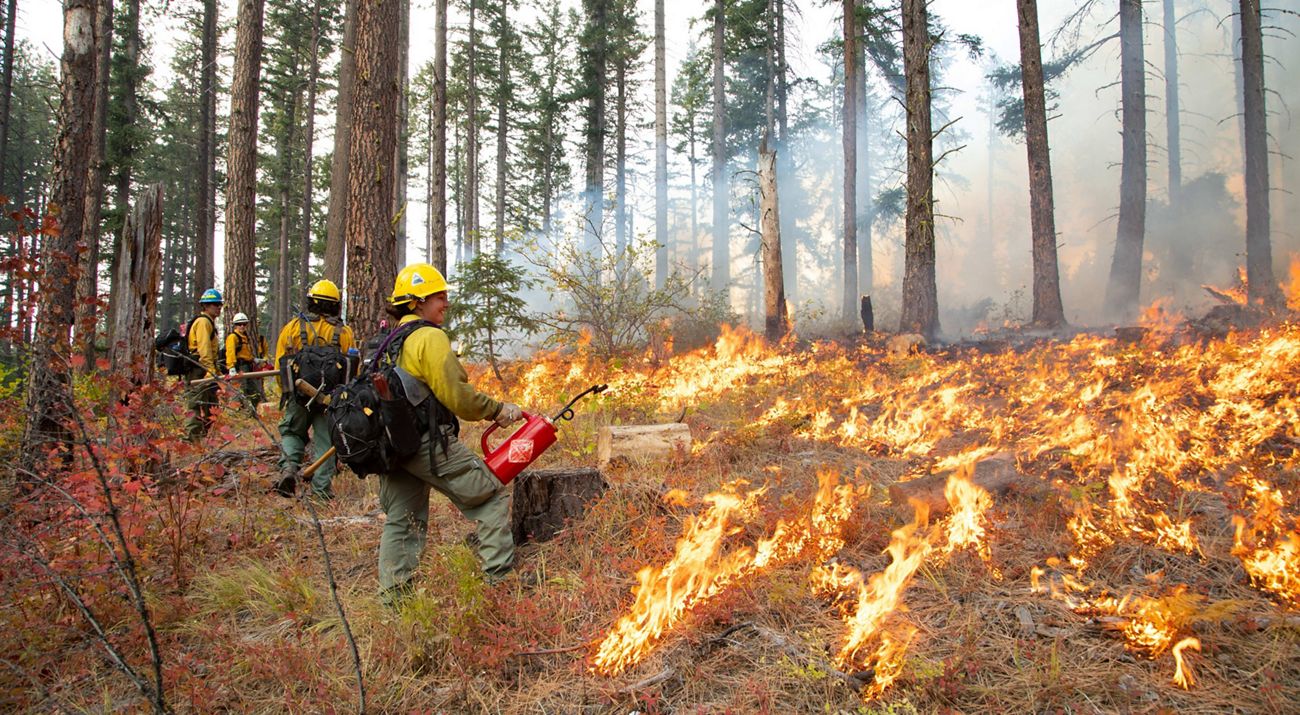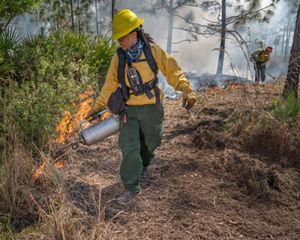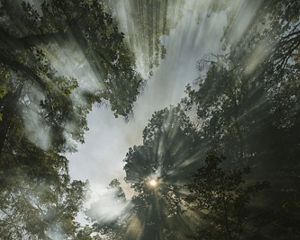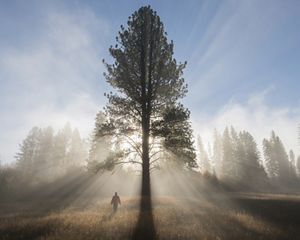The Nature Conservancy to Expand Prescribed Fire Workforce and Partnership with the USDA Forest Service
New agreements between the Forest Service and TNC will support the use of beneficial fire for landscapes and communities that need it most.
Media Contacts
-
Ann Kaiser
The Nature Conservancy
Email: ann.kaiser@tnc.org -
James Miller
The Nature Conservancy
Email: James.miller@tnc.org
The Nature Conservancy, the world’s leading conservation organization, today announces a portfolio of new multiyear agreements with the U.S. Department of Agriculture’s Forest Service to develop the prescribed fire workforce and expand the use of proactive beneficial fire to improve the safety of human communities and the health of natural systems.
Landscapes throughout North America are adapted to fire, and Indigenous Peoples have lived alongside and used fire to steward the land since time immemorial.
Prescribed fire—also called controlled burning—and other ecological restoration activities enhance the health of forests, watersheds and rangelands. These practices help ecosystems thrive and can make communities safer by reducing overabundant trees, fallen leaves and other natural matter that provide fuel for extreme wildfires.
Advancing the goals of the National Cohesive Wildland Fire Management Strategy and the Forest Service’s Wildfire Crisis Strategy, the new agreements leverage federal and non-federal funding to support prescribed fire, restorative forest thinning projects, and fire practitioner job training and workforce development, with a focus on fire-adapted landscapes and cultures in the U.S. West.
The new agreements build upon a 20-year partnership between the Forest Service and TNC. Through them, the Forest Service has obligated almost $45 million over five years to TNC, which will use existing staff, new hires and partner fire practitioners to collaborate with the Forest Service on mutual priority prescribed fire projects.

Work primarily will focus on National Forest System lands and other lands where the Forest Service and TNC have existing or developing relationships. Work will prioritize—but not be limited to—the 21 priority landscapes and 250 high-risk firesheds in the Western United States identified through the agency's Wildfire Crisis Strategy.
“Indigenous knowledge and Western science tell us that by using beneficial fire in the right way, we can reduce the increasing catastrophic effects of wildfires across our North American landscapes while improving the health of natural systems. The Nature Conservancy and the USDA Forest Service know we must increase the amount of beneficial fire throughout the United States to achieve these outcomes,” said Jennifer Morris, CEO, The Nature Conservancy. “To do this, we need a well-trained, multi-organizational workforce focused on prescribed fire. These investments support that objective.”
The Nature Conservancy has been working with fire for more than 60 years, and TNC fire staff and volunteers are qualified under National Wildfire Coordinating Group standards, which are required for federal agency fire practitioners. In addition to leading its own burns, TNC assists partners, including the Forest Service, with almost 350,000 acres of controlled burns annually.
Collaboration between TNC and the Forest Service also includes—alongside agencies of the Department of the Interior—sustained investments in people and places to build proactive fire management capacity and support communities around the country as they adapt to live more safely with fire.
“For more than a century, policies suppressing wildfire and stamping out Indigenous Peoples’ burning practices largely kept healthy fire from hundreds of millions of acres of North American landscapes that needed it,” said Marek Smith, director of TNC’s North America Fire program.
“The relationship between people and fire began to fragment,” Smith said. “Increased use of beneficial fire and development of a larger and more diverse community of fire practitioners will moderate the impacts of extreme wildfire—but, critically, it also will help rebuild the relationship between people and fire and create a better future for us all.”
Initial hiring and work supported by these agreements began in October.
The Nature Conservancy is a global conservation organization dedicated to conserving the lands and waters on which all life depends. Guided by science, we create innovative, on-the-ground solutions to our world’s toughest challenges so that nature and people can thrive together. We are tackling climate change, conserving lands, waters and oceans at an unprecedented scale, providing food and water sustainably and helping make cities more resilient. The Nature Conservancy is working to make a lasting difference around the world in 81 countries and territories (40 by direct conservation impact and 41 through partners) through a collaborative approach that engages local communities, governments, the private sector, and other partners. To learn more, visit nature.org or follow @nature_press on X.



